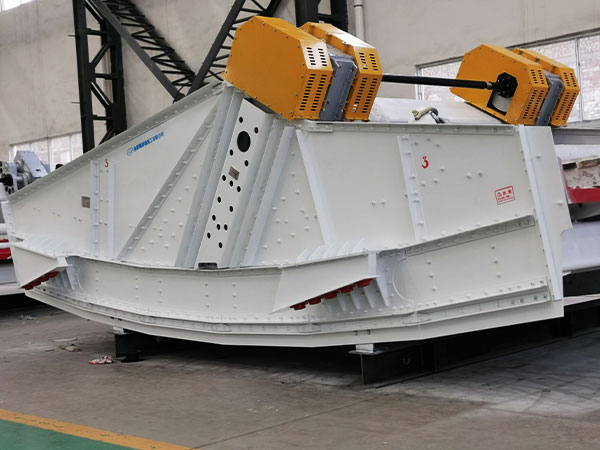How to maintain vibrating screen
Maintaining a vibrating screen is crucial to ensure its efficient operation and longevity. Regular maintenance helps prevent unexpected downtime, reduces the risk of costly repairs, and ensures the screen continues to perform at its best.
Vibrating screen maintenance

Inspect Screen Components: Regularly inspect the screen deck, side plates, cross members, and other structural components for signs of wear, corrosion, or damage. Replace any worn or damaged parts to prevent further deterioration and ensure structural integrity.
Check Screen Panels: Inspect the screen panels or mesh for tears, holes, or excessive wear. Damaged screen panels can affect screening efficiency and product quality. Replace worn or damaged panels as needed to maintain optimal performance.
Monitor Screen Media Tension: Proper tensioning of the screen media is essential for efficient screening. Periodically check the tension of the screen panels and adjust as necessary using tensioning bolts or other adjustment mechanisms.
Lubricate Bearings: Vibrating screens contain bearings that require lubrication to reduce friction and prevent premature wear. Regularly lubricate bearings according to the manufacturer’s recommendations using the appropriate lubricant.

Inspect Drive Components: Check the drive belts, pulleys, and motor mounts for signs of wear or misalignment. Tighten loose belts, replace worn belts, and realign misaligned components to ensure smooth operation of the screen drive system.
Clean Decks and Screening Surfaces: Remove any buildup of material, debris, or contaminants from the screen decks and screening surfaces. Use a pressure washer, brush, or air blower to clean the screens thoroughly and prevent blockages that can affect screening efficiency.
Inspect Springs and Suspension Components: Check the condition of the springs, coil springs, or rubber mounts that support the vibrating screen. Replace any damaged or worn suspension components to maintain proper screen motion and isolation.
Monitor Motor and Vibration Mechanism: Inspect the motor, eccentric shaft, or other vibration mechanisms for signs of wear, damage, or abnormal vibrations. Address any issues promptly to prevent further damage to the screen and drive system.

Perform Vibration Analysis: Periodically perform vibration analysis or condition monitoring to identify potential problems early. Monitor vibration levels, bearing temperatures, and other indicators of screen health to detect abnormalities and take corrective action as needed.
Document Maintenance Activities: Keep detailed records of maintenance activities, including inspections, repairs, and replacements. Use these records to track the condition of the vibrating screen over time and plan future maintenance tasks accordingly.
By following these maintenance guidelines and performing regular inspections and repairs, you can ensure your vibrating screen remains in good working condition, maximizing uptime and productivity.


